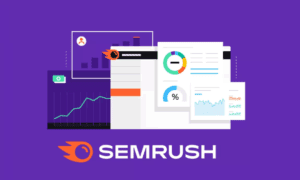Kishore Jeeri, a senior engineering manager at Oakton Technologies and former leader at Charles Schwab, Oracle, and Infosys, has developed automation-driven strategies to improve IT systems, remove integration barriers, and reduce costly breakdowns, helping keep operations smooth for Fortune 500 companies
Big businesses face an IT crisis. As they switch to mixed and multiple cloud setups, they face more issues. These include infrastructure problems, slow connections, and outages. Such disruptions can cost them millions. The Uptime Institute’s Annual Outage Analysis 2024 reveals that 54% of major companies reported their last big IT outage cost over $100,000. Also, 16% faced losses exceeding $1 million. These failures hurt finances, but they also threaten customer trust, regulatory compliance, and long-term success.
To tackle these issues, top companies are changing how they think about IT reliability, automation, and updates. Kishore Jeeri is one expert driving this change. He leads engineering at Oakton Technologies and has also managed teams at Charles Schwab, Oracle, and Infosys Technologies. Kishore has always aimed to cut downtime. He works on making IT systems run better together and also prepares digital systems for the future, playing a key role in protecting operations for some of the world’s biggest companies. At Infosys, he came up with a modular way to update old systems, making key platforms last longer. At Oracle, he put in place automation plans that reduced integration time by 40%, helping businesses grow. At Charles Schwab, he headed an IT overhaul after a merger, making sure everything went well while keeping millions in assets safe. At Oakton Technologies, he is driving efforts to create self-healing IT systems. This approach helps companies stay operational, even during major issues. In this article, he explains how to update old tech without disrupting daily work. He also discusses connecting complex business systems and using automation to prevent costly IT breakdowns. These are key challenges every large company must address to thrive in our digital world.
Taming Legacy Systems at Infosys
For many companies, old systems are both crucial and limiting; they’re vital for getting work done but often can’t keep up with new needs. Companies often find themselves stuck with outdated tech, unable to grow or add new tools without causing big problems. Infosys Technologies, a top IT consulting firm worldwide, has helped shape digital change plans for big companies. The company leads in global IT services, but it faces a common issue. Clients often struggle with old systems that block growth and innovation. Old systems, built many years back, couldn’t handle today’s business needs. As a result, companies had to connect these setups with new digital tools without messing up their work. Kishore faced this problem head-on as an offshore lead at Infosys from 2008 to 2012. He saw that thinking of old systems as roadblocks would stop new ideas. So, he viewed them as building blocks that smart updates could improve. His main plan was to break big systems into smaller, flexible parts, leading teams to put in place middleware solutions that linked old software to new apps. “Many people think you have to replace old systems with new ones. But businesses can gain a lot by adding new features in layers while keeping important processes,” he says. “The key is to change these systems from rigid setups into flexible ones that can grow over time.” Kishore used service-oriented architecture (SOA) and API-driven integration to make old and new systems communicate with each other. His work made old setups last longer and work better, cutting downtime by 30%. His approach set the stage for easier digital changes, proving that even old systems can adapt to today’s needs.
Refining Integration at Oracle
As companies expanded online, the demand for strong, connected IT systems increased sharply. Businesses no longer worked alone. So, expansion meant dealing with different technology stacks, software vendors, and complex cloud systems. The real challenge was ensuring these systems worked well together without any performance issues. As a global leader in database technology and enterprise software, Oracle supports essential systems for many of the world’s biggest companies. Therefore, keeping systems stable at this level demands cutting-edge automation and smooth integration strategies. At Oracle, Kishore worked as a senior analyst from 2012 to 2015, tackling integration challenges and pushing for automation. Traditional integration methods were often manual, sluggish, and prone to errors. So, he set up automated deployment pipelines with tools like Puppet and Ansible. This change greatly reduced the time to integrate new components. He also used Docker to create containerized environments, making software apps run well on various platforms without any compatibility issues. “The modern enterprise doesn’t work in silos anymore. With distributed systems operating across both cloud and on-prem environments, seamless integration is now a must,” he adds. “Automated deployment pipelines and containerization are now crucial because they support scalable and high-performance IT operations.” The results were impressive. System integration times improved by 40%, helping businesses launch new features faster and with fewer interruptions. His time at Oracle showed that integration can balance agility and stability, which is a tricky task that many companies struggle to achieve.
Mastering Mergers at Charles Schwab
Merging corporate IT systems is challenging. It involves combining different digital infrastructures. At the same time, businesses must keep running smoothly. Mergers are different from usual IT upgrades. They force organizations to blend systems that were never designed to work together. The main challenges are syncing data, aligning security measures, and making sure systems can communicate with each other. A botched integration can result in significant downtime, regulatory headaches, and financial setbacks. At Charles Schwab, one of the largest financial institutions in the U.S., mergers impact millions of clients, making IT integration becomes a high-stakes game. During a key merger, the company’s old IT systems struggled with newer platforms. This clash threatened operational stability. From 2017 to 2024, Kishore served as a senior manager in software development and engineering, playing a key role in resolving these conflicts. “Mergers connect businesses, but they also merge different IT cultures and systems. Without a smart approach, IT integration can become a bottleneck. This slows down growth after a merger,” he continues. “The key is to embrace flexibility. Microservices and containerized deployments provide this adaptability and reduce integration risks.” At the company, he changed the integration process by shifting from traditional, large architectures to a microservices framework. He didn’t make incompatible systems work together. Instead, he split big applications into smaller, independent services. He used Kubernetes for container orchestration and Terraform for infrastructure as code. This helped him scale quickly and deploy smoothly. This strategy cut integration timelines by 20% and boosted system reliability. It also created an IT environment that could quickly adjust to future acquisitions. This meant no major changes were necessary. His strategy turned a tough transition into a great example of smooth digital transformation.
Enhancing Digital Resilience at Oakton Technologies
In today’s digital landscape, resilience is a necessity. IT failures aren’t just small issues; they can halt operations, hurt finances, and damage a company’s reputation for a long time. Businesses must anticipate, manage, and bounce back from disruptions in real time. Neglecting to build strong IT infrastructures can lead to falling behind. It may even cause total operational failure. At Oakton Technologies, a leading firm in cloud infrastructure and cybersecurity where Kishore worked as a senior engineering manager, we see resilience as essential for business. It’s not just an IT goal; it’s crucial for success in cloud infrastructure and cybersecurity. The real challenge lies in spotting and addressing failures before they affect end users. “Building resilience isn’t just about having backups anymore; it’s about being smart,” he concludes. “IT systems must identify failures and respond automatically. This keeps them running smoothly, even during unexpected issues. This is where digital operations are headed.” Kishore’s approach focuses on predictive monitoring and self-healing infrastructure. His team used observability tools like AppDynamics, Grafana, and the ELK Stack to build a real-time monitoring system that catches anomalies before they spiral out of control. He introduced AI-driven automation to start corrective actions on the spot, minimizing disruptions. This smart strategy raised issue detection rates by 70%. It also greatly reduced downtime incidents. Because of his leadership, Oakton Technologies created a system that stops problems before they start, setting a new standard for reliability in the industry.
IT resilience is no longer a choice; it’s a matter of survival. As digital ecosystems become more complex, the future of enterprise success relies on modernizing smoothly, automating efficiently, and integrating quickly. Kishore Jeeri has proven that companies don’t have to accept downtime, system failures, or old systems as the norm. His strategy uses automation, smart monitoring, and flexible IT frameworks, setting a new standard in the industry and making it clear companies that focus on resilience now will lead the digital economy tomorrow.





























